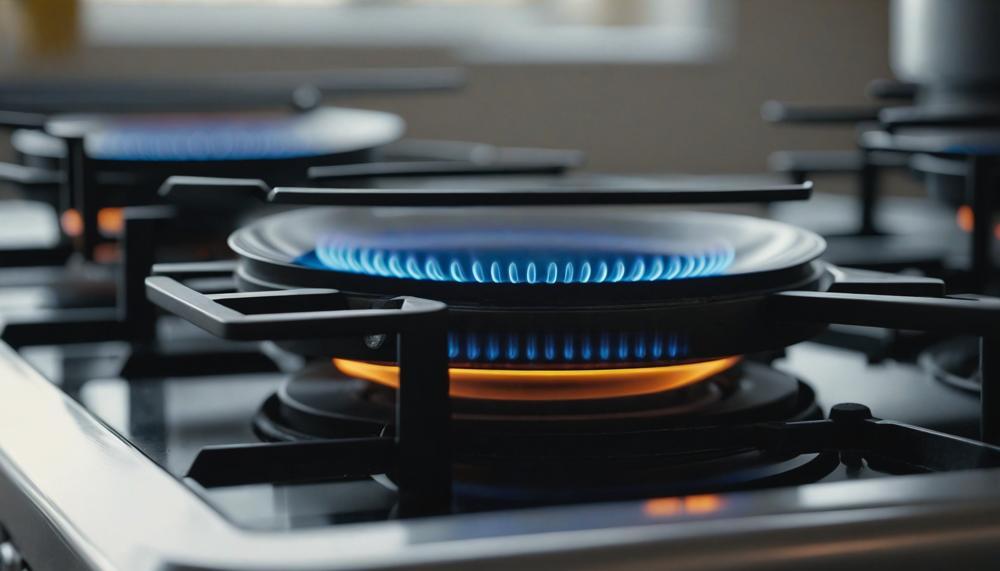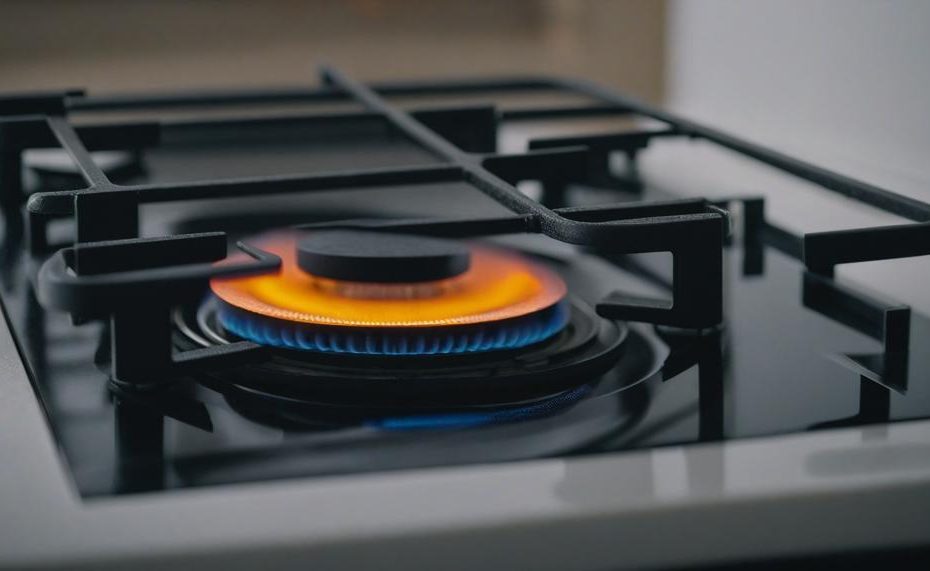It’s simpler than you might think, but it does require some careful steps to ensure safety and prevent damage. Whether you’re doing a kitchen renovation, a deep clean, or just checking on your connections, knowing how to safely move your gas stove is essential.
First, always ensure that the main gas line is turned off to prevent any leaks. Then, place a protective sheet underneath the stove to avoid scratching your floors. Gently slide the stove out in a straight line, making sure the gas line has enough slack to move without tearing or pulling too hard.
Key Takeaways:
- Safety First: Always turn off the main gas line before moving the stove.
- Protect Your Floors: Use a sheet or a piece of cardboard to avoid scratches.
- Gently Does It: Slide the stove straight out, ensuring the gas line remains intact.
- Space Matters: Make sure you have at least six feet of space to comfortably move the stove.
By following these straightforward steps, you’ll be able to pull your gas stove out from the wall safely and efficiently. Now, let’s dive into the details of each step to make the process even smoother.
Contents
Safety Precautions
When pulling a gas stove out from the wall, it’s paramount to follow these safety precautions to prevent accidents and ensure a smooth process:
| Safety Precaution | Details | Why It Matters |
| Turn Off the Gas Supply | Shut off the gas valve before moving the stove. | Prevents potential gas leaks and explosions. |
| Ventilate the Area | Open windows and doors for airflow. | Disperses any accidental gas emissions. |
| Disconnect Power Supply | Unplug the stove from the electrical outlet. | Avoids electrical hazards and malfunctions. |
| Use Protective Gear | Wear gloves and protective eyewear. | Prevents injuries from sharp edges and debris. |
| Place a Protective Sheet | Use a sheet or cardboard underneath. | Protects the floor from scratches and damage. |
| Check Gas Line Flexibility | Ensure the gas line can move without strain. | Avoids tearing or damaging the gas line. |
| Move the Stove Slowly and Gently | Apply even pressure when pulling the stove out. | Prevents tipping and ensures a smooth process. |
| Inspect for Leaks | Check gas connections with soap and water. | Detects leaks that could lead to accidents. |
| Maintain Clearance Space | Ensure enough space for the gas line to move. | Avoids excessive bending and strain on the gas line. |
| Re-check Connections | Ensure all connections are secure after moving. | Prevents gas leaks and ensures safe operation. |

By following these precautions, you can safely manage the process of pulling a gas stove out from the wall.
Tools and Materials Required
To safely and effectively pull a gas stove out from the wall, the following tools and materials are essential:
| Tool/Material | Description | Purpose |
| Protective Sheet or Covering | A durable sheet, blanket, or heavy-duty cloth | Prevents scratches and damage to the floor or surfaces under the stove |
| Work Gloves | Sturdy gloves with good grip | Protects your hands from sharp edges and provides a better grip |
| Wrench or Pliers | An adjustable wrench or a pair of pliers | Used to disconnect the gas line if necessary |
| Flashlight | A small, bright flashlight | Helps in inspecting the gas line connection and ensuring safety |
| Assistant | An extra pair of hands | Provides additional support for moving the stove |
| Measuring Tape | A standard measuring tape | Ensures there is enough clearance (at least six feet) for the gas line |
| Access to Gas Line Shut-off Valve | Locate the valve before beginning | Essential for turning off the gas supply to ensure safety |
Steps for Pulling Out a Gas Stove
- Preparation: Lay the protective sheet under the stove by lifting it slightly. This prevents damage to your flooring.
- Gas Supply: Ensure the gas line shut-off valve is easily accessible. Turn off the main gas supply for added safety.
- Clearance: Confirm you have at least six feet of space for the gas line to move without tension.
- Sliding the Stove: With the help of an assistant, carefully slide the stove out in a straight line to avoid kinking or damaging the gas line.
- Inspection: Use a flashlight to inspect the gas connection and ensure it remains intact and undamaged.
Additional Tips
- Always wear work gloves to protect your hands and ensure a firm grip.
- Never rush the process; move the stove slowly and steadily.
- Regularly check the condition of your gas line to prevent leaks or damage.
Step-by-Step Guide to Disconnecting a Gas Stove from the Wall
| Step | Instructions | Details |
| 1 | Gather Tools and Materials | Prepare a protective sheet, work gloves, wrench or pliers, flashlight, and measuring tape. Ensure you have access to the gas line shut-off valve. |
| 2 | Turn Off Gas Supply | Locate the gas shut-off valve, usually found behind the stove or in the basement. Turn the valve to the off position to stop the gas flow. |
| 3 | Ventilate the Area | Open windows and doors to ensure proper ventilation. This helps dissipate any residual gas and ensures a safe working environment. |
| 4 | Disconnect the Gas Line | Using a wrench or pliers, carefully loosen the connector on the gas line. Hold the stove’s connector steady to prevent damage. |
| 5 | Check for Gas Leaks | After disconnecting, check for any gas leaks using a soap and water solution. Apply it to the connection and watch for bubbles. |
| 6 | Move the Stove | With the help of an assistant, carefully pull the stove away from the wall. Use a protective sheet to prevent damage to the floor. |
| 7 | Cap the Gas Line | Cap the open gas line with a safety cap to prevent any gas leaks. Ensure it’s secure and tight. |
Turning off the gas supply is paramount to prevent leaks. Always ensure good ventilation and be cautious when handling gas connections. If you encounter difficulties, don’t hesitate to consult a professional. Your safety is the top priority.
Reinstalling the Gas Stove
Reinstalling a gas stove after pulling it out from the wall involves a methodical approach to ensure safety and proper functionality. Here’s a detailed process to follow:
| Step | Action | Details |
| Inspection and Cleaning | Inspect and clean the stove | Check for damage; clean burners and interior |
| Positioning the Stove | Move the stove back in place | Use an appliance dolly for easier movement |
| Connecting the Gas Line | Reattach and secure the gas line | Use Teflon tape on threads; secure with a wrench |
| Checking for Leaks | Test for gas leaks | Use a leak detector or soap solution |
| Reconnecting Electrical Components | Plug in the stove | Ensure electronic controls or igniter are connected |
| Testing the Stove | Test burners and oven | Ensure proper ignition and even flames |
| Final Adjustments | Level the stove | Adjust legs for stability and even cooking |
Conclusion
Safely pulling your gas stove out from the wall may seem challenging, but with the right approach, it’s straightforward and manageable. Start by ensuring the main gas supply is shut off to prevent leaks. Then, lay a protective sheet or cardboard under the stove to safeguard your floors from scratches. Gently slide the stove out in a straight line, making sure there’s sufficient slack in the gas line to avoid any damage.
Key tips include ensuring a well-ventilated area and unplugging the stove from its power source to avoid electrical hazards. Check the flexibility of the gas line beforehand and use work gloves for protection. Moving the stove slowly and with even pressure prevents tipping and maintains balance.
Remember to inspect the gas connections for any signs of leaks with a soap and water solution. Adequate space (at least six feet) should be maintained for maneuvering the stove safely. After the move, recheck all connections and cautiously turn on the gas supply, watching for unusual smells or sounds to confirm everything is secure.





